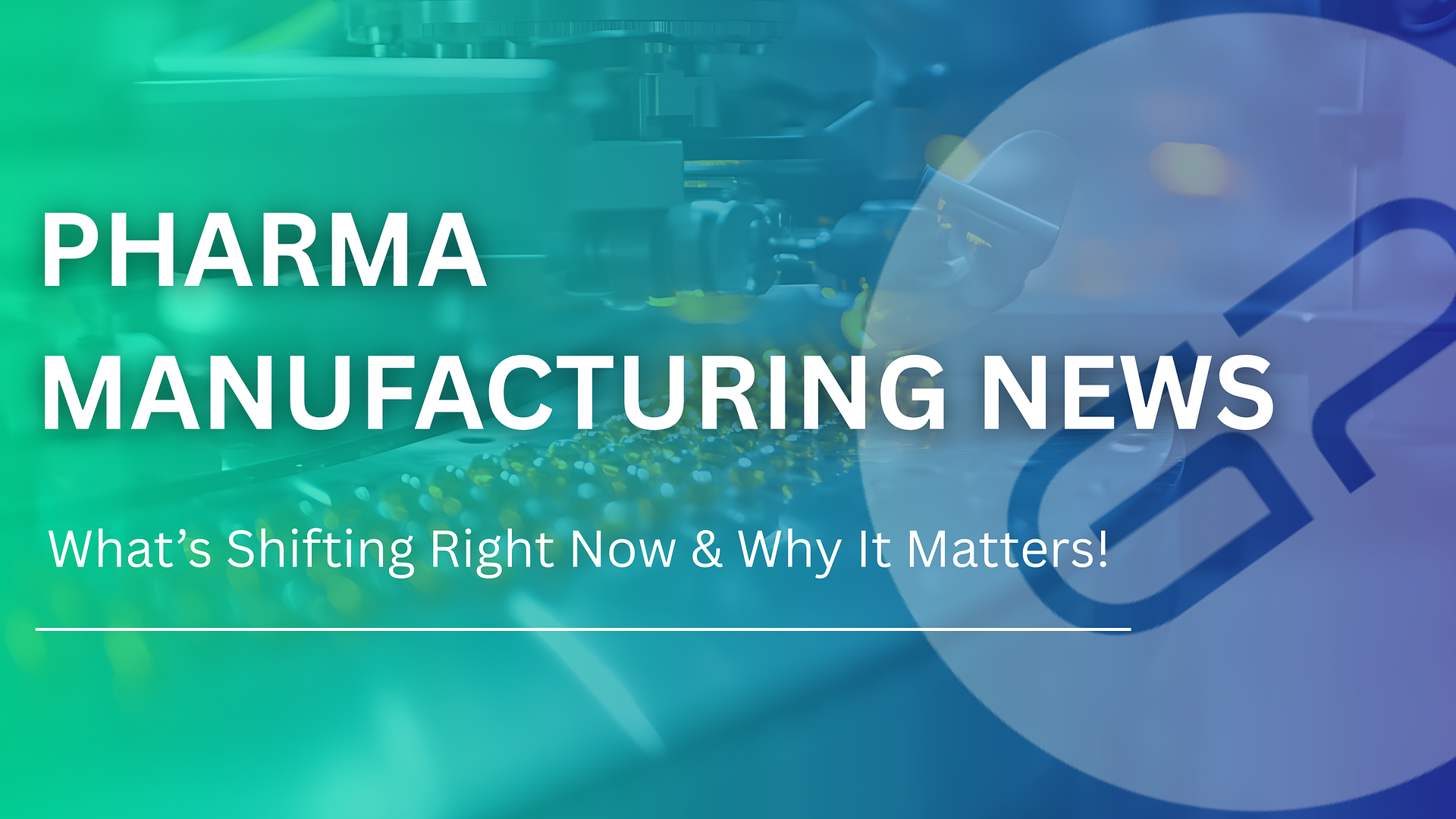
Pharmaceutical manufacturing is undergoing a significant transformation. From large-scale facility expansions and onshoring initiatives to AI-driven smart manufacturing and heightened regulatory scrutiny, the industry is redefining how medicines are produced, validated and delivered.
For manufacturers, engineers and decision-makers, staying informed on these developments is crucial for maintaining competitive, compliant and cost-effective production operations. This article explores the latest pharmaceutical manufacturing news and the trends currently shaping the future of the sector.
1. Onshoring & Global Capacity Expansion
One of the most notable trends in pharmaceutical manufacturing is the strategic move towards onshoring and regional production expansion. Major pharmaceutical companies are investing heavily in domestic facilities to reduce reliance on complex global supply chains and improve operational resilience.
This shift is driven by:
- Supply chain disruptions experienced during and post-pandemic
- Increased geopolitical risk
- Growing demand for rapid product availability
- Regulatory pressure to localise critical drug supply
For manufacturers, this trend is increasing the need for scalable production infrastructure, flexible machinery and asset lifecycle planning that can adapt to fluctuating demand.
2. Smart Manufacturing & AI Integration
Digital transformation is now a defining factor in modern pharmaceutical production. Smart manufacturing technologies such as artificial intelligence (AI), digital twins and predictive maintenance systems are being integrated into facilities to enhance efficiency and reduce risk.
Key benefits include:
- Real-time process monitoring
- Reduced downtime through predictive maintenance
- Improved batch consistency and traceability
- Faster product release cycles
As facilities adopt intelligent systems, equipment compatibility and data integration capabilities are becoming essential considerations when investing in new or refurbished machinery.
3. Sustainability & ESG Pressures
Sustainability has moved from a future goal to a present-day operational requirement. Pharmaceutical manufacturers are increasingly being assessed on their environmental impact, energy consumption and waste reduction practices.
This has led to:
- Increased interest in energy-efficient production equipment
- Growth in refurbished and revalidated machinery markets
- Demand for low-carbon manufacturing solutions
- Focus on extending equipment lifecycle value
Sustainable manufacturing is now closely linked to profitability, regulatory compliance and long-term brand credibility.
4. Regulatory Evolution & Compliance Requirements
Global regulatory bodies continue to modernise frameworks to reflect emerging technologies and production methods. Compliance now goes beyond product quality and extends into data integrity, digital traceability and process transparency.
Manufacturers must ensure:
- Equipment validation aligns with GMP standards
- Production systems meet audit and documentation requirements
- Processes support traceability and quality assurance
This environment is increasing demand for regulation-ready equipment and expert asset management strategies.
5. Equipment Strategy: Lifecycle Over Replacement
A growing number of manufacturers are moving away from pure replacement models and towards lifecycle optimisation strategies. This includes machine refurbishment, revalidation and performance enhancement as cost-effective alternatives to purchasing new equipment.
Benefits of lifecycle management include:
- Reduced capital expenditure
- Improved ROI on production assets
- Faster deployment timelines
- Sustainable production practices
This strategic shift is redefining how manufacturers approach production planning and facility investment decisions.
What This Means for Pharmaceutical Manufacturers
The pharmaceutical manufacturing landscape is becoming more complex, more data-driven and more performance-focused. Manufacturers must now balance:
- Compliance and quality assurance
- Cost-effective production models
- Sustainability goals
- Capacity scalability
The future of pharmaceutical manufacturing belongs to organisations that invest in strategic asset planning, regulatory readiness and intelligent infrastructure.
Final Thoughts
Pharmaceutical manufacturing is no longer just about scaling output. It is about efficiency, compliance, sustainability and adaptability.
Businesses that align their equipment strategy with technological innovation and regulatory expectations will be best positioned for long-term success in an increasingly competitive global market.
